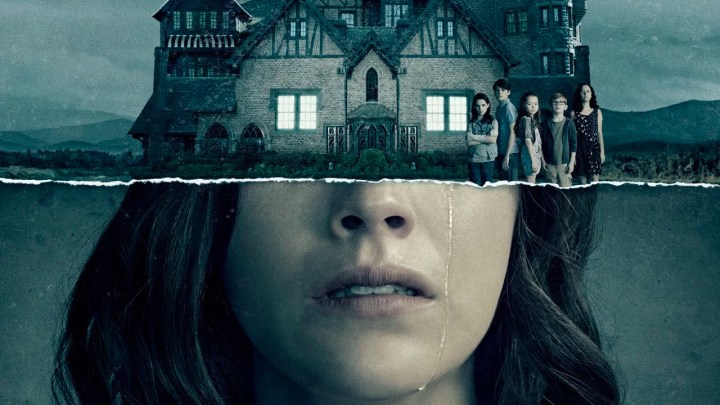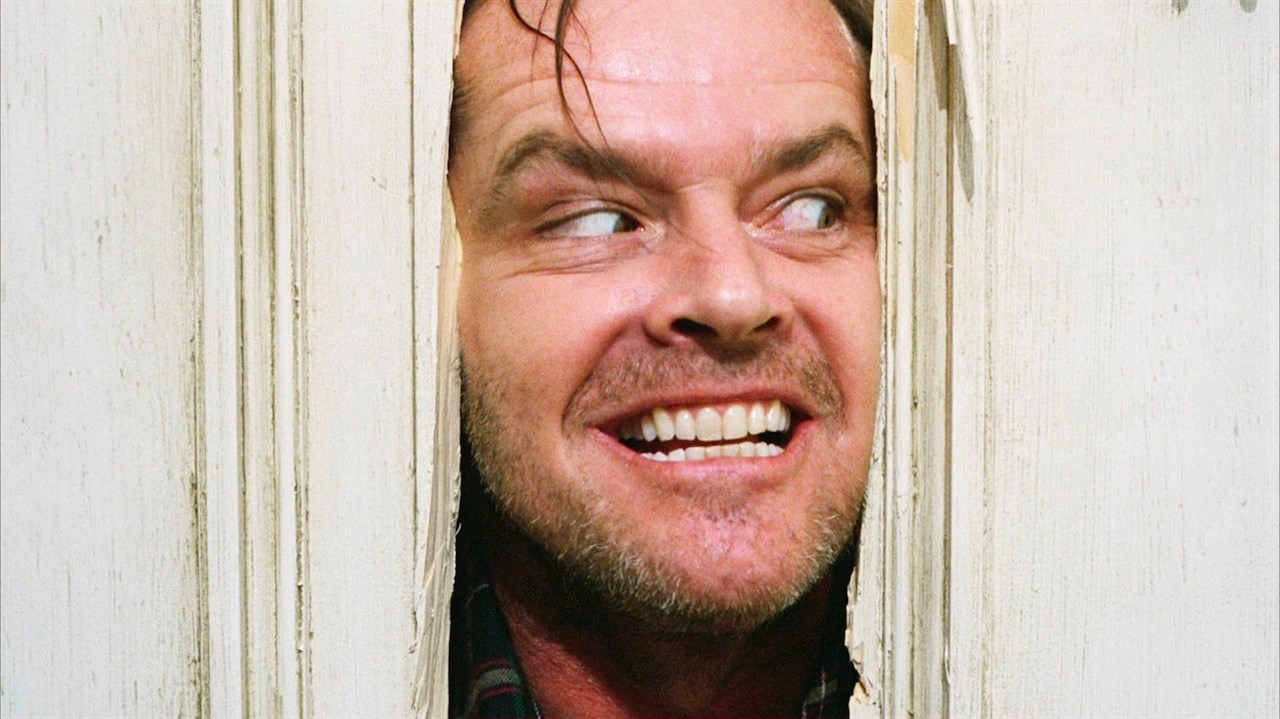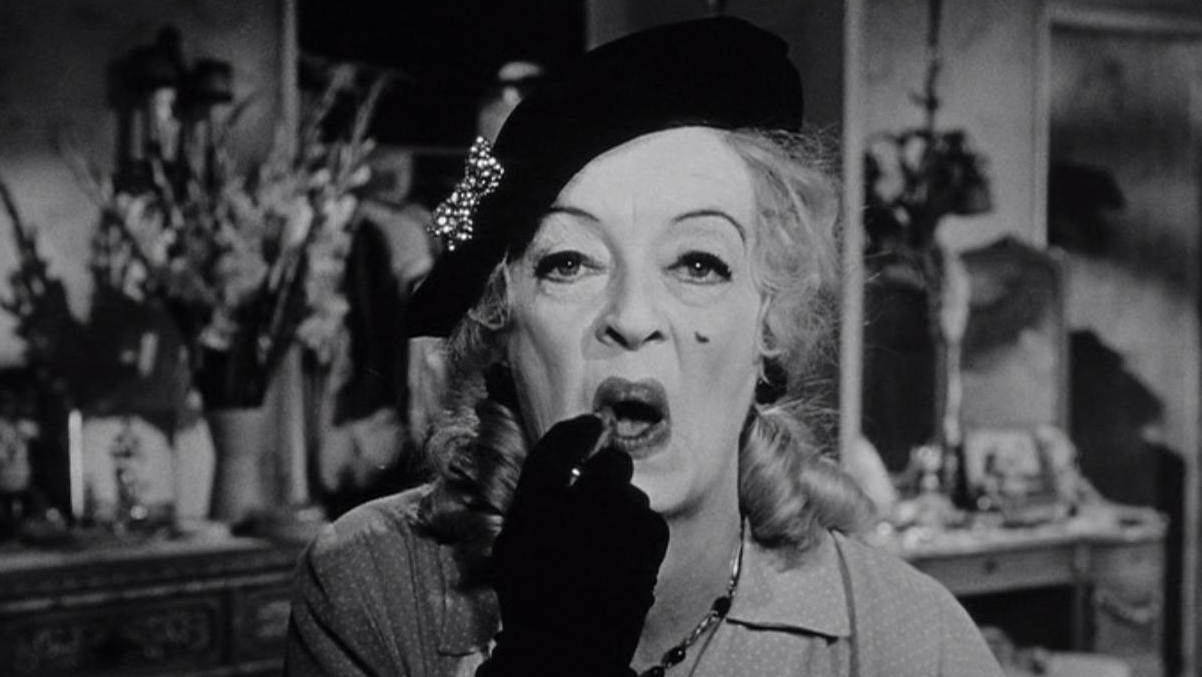FLIXATION
The Haunting of Hill House: Grand Guignol comes out from under the bed to frighten the Netflix generation

The muted wails and whimpers of the unseen who should not be there. Unfathomable shuffling and scraping behind dark walls. Decapitated heads with muscles twitching. Strange maladies and grotesque human traits. All happening in a gloomy house of many rooms, attics and mysterious cellars and a history of death and madness. Just add humans and let the horror ensue. These are the ingredients of the dramatic genre known as Grand Guignol. And don’t look behind you, because... it’s back.
Horror was never going to be the same again after American Horror Story: Murder House made its debut in on 5 October 2011, reinventing a genre that had already been rebooted many times over the century and more since Grand Guignol first was formed in a strange theatre in Paris in the 1890s. Yet a series has come along which, while being every bit as contemporary for our audiences as American Horror Story, pays homage to the roots of the genre by sticking close to the idea of a big haunted house which seems to have a dark, sinister life of its own.
Gratuitousness is frowned upon in most film and theatre genres, but not so in Grand Guignol, which requires it in great doses. The genre began its life in the Theatre du Grand Guignol in an obscure part of Pigalle, Paris, in 1897. Oscar Metenier, a playwright who outraged Parisian sensibilities by populating his stage with depictions of whores, malcontents and street urchins, borrowed part of the name from Guignol, a controversial puppet of the time known for giving a social commentator’s voice to the downtrodden silk workers of Lyon. Metenier is thought to have added the word “Grand” to suggest himself as a grown-up version of the puppet.
But the genre was not fully formed until his successor as director, Max Maurey, only a year later in 1898, turned the theatre, according to grandguignol.com, into a “house of horror”, adding, “He measured the success of a play by the number of people who fainted during its performance, and, to attract publicity, hired a house doctor to treat the more fainthearted spectators”.

Jack Nicholson’s ‘Here’s Johnny!’ moment in Stanley Kubrick’s ‘The Shining’.
Over time, “Grand Guignol” came to refer to a dark and frightening drama set in a haunted house or, in the case of one particularly notable example of the ouvre, in a New York apartment. In Roman Polanski’s 1968 psychological horror masterpiece Rosemary’s Baby, Mia Farrow plays a young newlywed and mother mentally imprisoned in an apartment in the Dakota Building on Manhattan’s Upper West Side, where John Lennon would be cut down by the hateful Mark Chapman in 1989, as if to cement the building’s sinister reputation. Like all good Grand Guignol settings, the Dakota Building looks the part.

Mia Farrow in Roman Polanski’s ‘Rosemary’s Baby’.
Like all of the best Grand Guignol films, Rosemary’s Baby is peopled by a cast of malignant characters who display psychopathic tendencies, offset against one or more helpless innocents; said psychopaths literally having no evident empathy for the protagonist, whether it be a woman mostly alone in a flat (Farrow), a father rendered incapable of defending his family in a creepy hotel (Jack Nicholson in The Shining), the terrified girls in a sorority house (the memorable and much-imitated slasher film Black Christmas, 1974) or an unwitting family seemingly persecuted by strange forces or creatures (the many examples include various incarnations of The Amityville Horror, or, now, The Haunting of Hill House).
Watch the official Netflix trailer:
In the upper echelons of the Grand Guignol filmic pantheon are such luminaries as Whatever Happened to Baby Jane (1962) – the sort of film that stays with you for the rest of your life; The House of Usher (1960), the deliciously titled Blood and Black Lace (1964), the original Dracula (1958), and, perhaps the most seminal of them all, Hitchcock’s revered Psycho (1960).

Bette Davis in the splendidly nasty ‘Whatever Happened to Baby Jane?’
Even Hitchcock’s The Birds arguably transmogrifies into Grand Guignol by the time Tippi Hedren and other protagonists are holed up in the lonely house with birds attacking from every aspect. As with all great Grand Guignol, the house both entraps them and fails to protect them.
And that title, Psycho, most perfectly captures the essence of Grand Guignol: the unbreakable marriage of the (seemingly) otherworldly and the mentally unstable. Whether or not Norman Bates’ mother is really dead, or alive, or whether she even exists/existed other than in his tortured imagination, it’s what is going on in Norman Bates’s head that the story is all about. This was magnificently explored in the TV series Bates Motel, in which Freddie Highmore managed to wrest the fictional character from the hands of Anthony Perkins in spite of the latter’s six-decade lead in cementing his face and name to the part. If you’re not aware of this, you might want to watch Bates Motel.

Janet Leigh in Hitchcock’s ‘Psycho’.
But let’s run screaming from the house where Norman Bates clung to his ma’s apron strings, dip in and out of the home of the bickering sisters in Whatever Happened to Baby Jane?, glide along the corridors of The Shining and emerge into the sunlight only to find ourselves entering the front door of Mia Farrow’s cooky neighbours’ apartment in Rosemary’s Baby, then find ourselves flung headlong into the cellar in American Horror Story: Murder House, before we emerge, shaking and jibbering, only to realise that the front door of Hill House has just shut behind us. Welcome to Grand Guignol, the 2018 version.
The Haunting of Hill House first saw the light of day as a novel by Shirley Jackson in 1959, and Wikipedia describes it perfectly when it says the book “relies on terror rather than horror to elicit emotion in the reader, using complex relationships between the mysterious events in the house and the characters’ psyches”. Writer-director Mike Flanagan acknowledged, in an interview with Vulture just before the series’ release, that he had taken Jackson’s characters and expanded them, and even created a new character based on the author herself. Shirley, in the show, is the seemingly most grounded of the four siblings who moved, with their parents, into the house which their dad wanted to restore and flip.
But some houses might not really want to be flipped. Which seems a good point at which to start to get a feel of what it’s like to be in its hallway:
Clip: The Scariest Hallway We’ve Ever Seen
Does a house have a heart? If it does, how does it beat? What (literally) makes it tick? This will be answered as the final episode (10) unfolds, but before the show suddenly goes all This Is Us on you and you have to grab a Kleenex.
Moving into the house on That Fateful Day (creepy zither riff here please) were Hugh and Olivia (Liv) Crain (Henry Thomas/Timothy Hutton and Carla Gugino, last seen in the under-rated Roadies), their elder son Steve (the ubiquitous Dutch actor Michiel Huisman as the older Steve), younger son Luke (the older version played by British actor Oliver Jackson-Cohen), and the three sisters: Shirley, the eldest (and sort-of-portraying the book’s author Jackson), owns a funeral parlour and makes a macabre art of “fixing” mutilated corpses. So she’ll come in handy. Theo (a girl, called Theodora) is a firm-of-jaw lesbian whose hard-to-crack carapace will eventually be pierced. She’s played as an adult by Kate Siegel (an actor and screenwriter who likes writing horror scripts, and who is married to director Flanagan) while the older Shirley is portrayed by Elizabeth Reaser.
Clip: Candles and something hanging:
As youngest sister Nell, and pretty much the tale’s kingpin, are Victoria Pedretti and Violet McGraw. McGraw is a remarkable child actor who brings so much to her role that she seems more prodigy than mere child actor, bringing to mind the younger Haley Joel Osment. Nell suffers from sleep paralysis, a frightening condition which nobody other than one who has experienced it can understand. You feel like a load of cement, and stuck to your bed is if by the force of a magnet. To be in that condition when also petrified (almost literally) by an approaching spectre in the planet’s most frightening house, well, that is true terror.
Nell is the one of the siblings who first sees the Bent-Neck lady, one of the main ghostly protagonists. But the more frightening ghost, for me, is the walking stick man who peers under the bed where a little boy is hiding and glides along maliciously behind the main story-teller, writer Steve, who grows up from the eldest son to become a best-selling author of books about – erm, ghosts. Which he claims not to believe in.
By most accounts, the sixth episode is the one that has the TV world talking. So much is going on at the funeral of a family member that you might want to rewatch it afterwards.
The making of episode 6:
Another central “character” is the Red Room, the seemingly dark heart of the house whose role remains highly mysterious until episode 10, when its purpose in the tale becomes thoroughly well explained, most intriguingly.
Video explainer (and spoiler alert) – the Red Room & Bent Neck Lady:
But as much as it is about spectres, it is also about grief and about mental illness. There is a seeming connectedness between these things, so one aspect of the story is to suggest that it is mental unbalance that makes some people believe they can see, or sense, “ghosts” or at least some kind of spiritual or otherworldly realm, while an opposing aspect is to suggest that maybe the people who claim to have the “sight” do, in fact, “see” things most of us don’t.
But there are way more ghosts in Hill House that you missed – they’re freaking everywhere – and here’s a useful guide if you’d like to go through it hitting the pause button.
Either way, at the end of it all you will have watched an engrossing, chilling, thought-provoking and – I would wager – memorable 10-part series that has been very well received.
Grand Guignol has long been among the more successful genres in film and, now, television. And hey, don’t look behind you, because – it’s back. DM


















 Become an Insider
Become an Insider